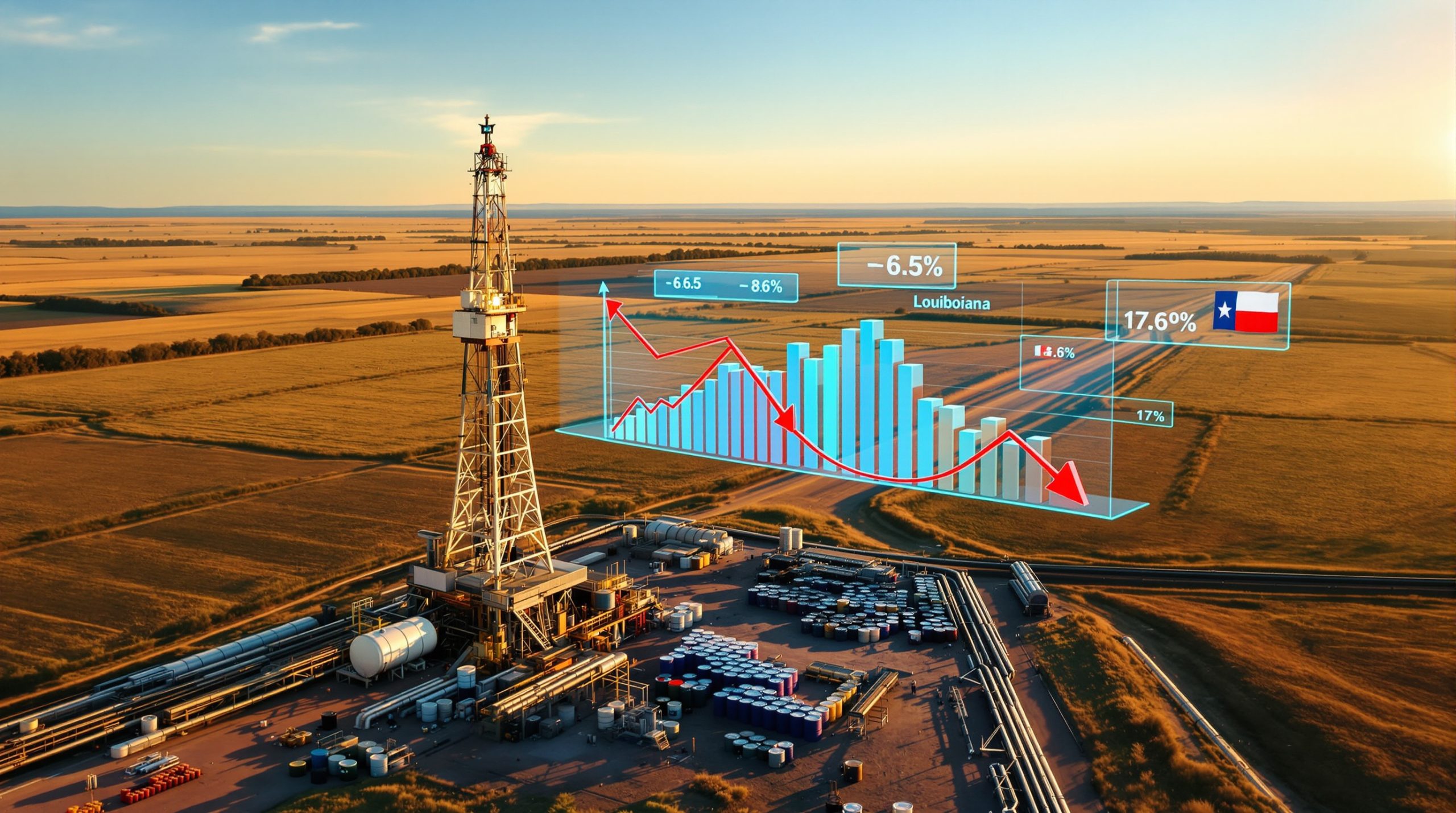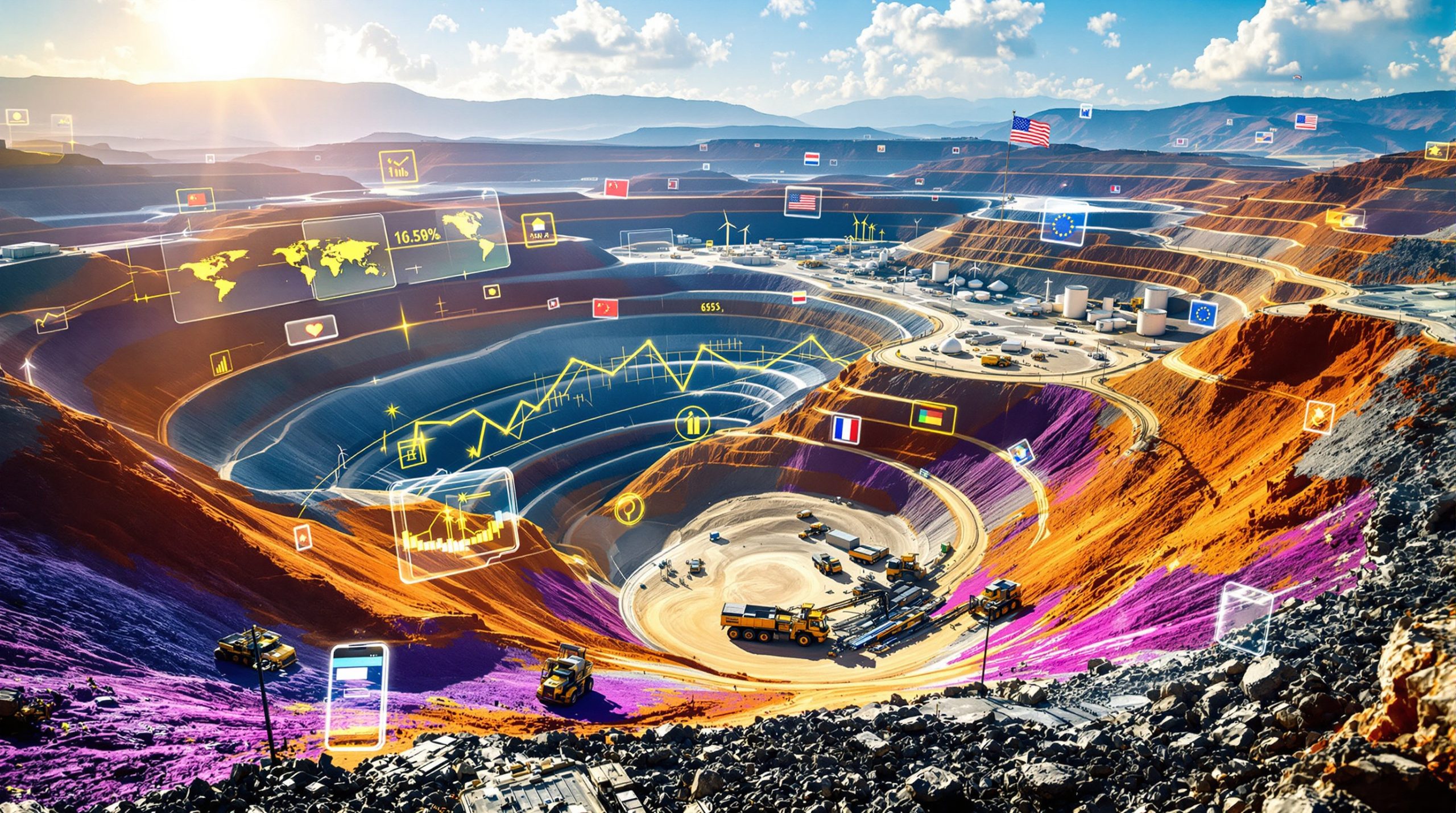Australia's defence sector is experiencing a remarkable transformation that extends far beyond military strategy. The nation's defence expenditure is escalating from $39.1 billion in 2024 to an anticipated $58.4 billion by FY25/26, representing a substantial 49% increase that signals more than just enhanced military capabilities.
This dramatic budget expansion reflects Australia's commitment to securing critical mineral supply chains, creating unprecedented opportunities for ASX 200 mining stock defence spending investors. The strategic shift encompasses advanced military technologies, hypersonic weapon systems, and next-generation naval platforms that require specialised materials exclusively sourced through mining operations. Furthermore, the government's critical minerals executive order demonstrates the strategic importance of mineral security in defence applications.
Critical Defence Investment Breakdown:
• Total projected defence budget FY25/26: $58.4 billion
• Critical minerals allocation: $8.8 billion (15% of total expenditure)
• Year-over-year growth trajectory: 49% increase from 2024 baseline
• Strategic focus: Supply chain security and domestic sourcing capabilities
The implications extend beyond traditional military procurement, encompassing sophisticated defence technologies that demand reliable access to specialised materials only mining companies can provide consistently at scale. In addition, Australia's critical minerals reserve initiatives align with these defence spending priorities.
Essential Minerals Powering Modern Defence Systems
Contemporary military equipment requires an intricate network of specialised materials, with defence industry analysts identifying up to 12 critical minerals essential for advanced military applications. Understanding this mineral ecosystem reveals why certain ASX mining stocks are experiencing exceptional performance metrics.
According to industry experts, modern defence systems incorporate titanium, aluminium, copper, steel, graphite, rare earths, lithium, cobalt, gallium, and tantalum, among other specialised materials. Each component serves crucial functions in sophisticated military equipment ranging from drone systems to submarine infrastructure. Moreover, CRM facility developments across allied nations reflect the global strategic importance of these materials.
Strategic Mineral Applications in Defence:
| Mineral Category | Primary Military Function | Strategic Importance |
|---|---|---|
| Titanium Alloys | Hypersonic systems, aerospace components | Critical for extreme temperature resistance |
| Copper Networks | Electronic warfare, naval communications | Essential for AUKUS submarine programs |
| Nickel Compounds | Armour systems, energy storage | Vital for autonomous military platforms |
| Cobalt Elements | Advanced electronics, battery technology | Required for next-generation defence systems |
| Rare Earth Metals | Precision navigation, radar technology | Fundamental for guidance system accuracy |
The complexity of modern military platforms means individual aircraft, naval vessels, or autonomous systems require multiple critical minerals simultaneously, creating sustained demand across diversified mining portfolios.
Modern fighter jets incorporate dozens of specialised materials, while submarine construction demands extensive mineral inputs for hull integrity, propulsion systems, and sophisticated electronics packages. This creates exceptional opportunities for ASX 200 mining stock defence spending portfolios.
ASX 200 Mining Leaders Capture Defence Opportunities
Major Australian mining corporations are strategically positioning their operations to capitalise on defence spending increases, with several companies already establishing significant government partnerships and supply agreements. However, it's worth noting that the broader mining sector has experienced mixed performance, as evidenced by recent BHP strategic pivot decisions and Rio Tinto tax developments affecting sector dynamics.
IperionX Limited (ASX: IPX) – Titanium Production Leadership
IperionX has emerged as a standout performer in the defence-focused mining sector, demonstrating remarkable share price appreciation from $2.17 in April to $7.77 by October, representing a 258% gain over approximately six months. This performance reflects the company's strategic positioning within the titanium supply chain.
The company secured US$42.5 million in United States government funding during 2025 to expand titanium production capabilities in Virginia, positioning itself as a key domestic supplier aligned with both American and Australian critical minerals security frameworks.
Production Scaling Economics:
• Current production capacity: 200 tonnes annually
• Projected 2030 capacity: Over 10,000 tonnes annually
• Cost reduction achievement: From US$75/kg to US$29/kg
• Government contract exposure: US Department of Defense procurement worth up to US$99 million
This substantial capacity expansion demonstrates how specialised mining operations can scale rapidly when backed by government contracts and strategic mineral demand.
BHP Group (ASX: BHP) – Diversified Defence Exposure
BHP's extensive copper and nickel operations position the company advantageously for defence-related commodity demand, particularly through copper production supporting naval shipbuilding programs and electronic warfare system development.
Rio Tinto (ASX: RIO) – Strategic Metal Integration
Rio Tinto's aluminium and copper portfolios directly support aerospace and naval applications, with recent analyst projections suggesting potential share price appreciation opportunities driven by defence-related commodity demand patterns.
Mineral Resources (ASX: MIN) – Battery Technology Focus
MIN's lithium operations support advanced battery systems for military applications, while iron ore production contributes to steel manufacturing for defence infrastructure projects.
Why Are ASX Defence Stocks Experiencing Such Strong Performance?
The surge in defence-related mining stocks reflects broader market recognition of the strategic shift towards military preparedness and supply chain security. Rising defence budgets across Western nations have created unprecedented demand for specialised materials, while ASX 200 defence stocks surge amid rising global focus on security, reflecting investor confidence in this strategic sector.
Consequently, ASX 200 mining stock defence spending opportunities are attracting institutional and retail investor attention as traditional commodity cycles become increasingly influenced by geopolitical considerations.
Titanium: The Metal Driving Defence Innovation
Titanium has established itself as the premier performance driver in defence-related mining investments, with prices maintaining elevation due to supply constraints combined with expanding military application requirements. This specialised metal experiences unprecedented demand across multiple defence technology sectors.
Advanced Defence Applications:
• Hypersonic weapon systems requiring extreme heat resistance capabilities
• Naval vessel components demanding superior corrosion resistance
• Next-generation autonomous drone frameworks needing lightweight strength
• Military aircraft engines requiring high-performance alloys
Production Economics Transformation
Recent technological advances have dramatically improved titanium production economics, with manufacturing costs declining significantly as production scales expand. This cost reduction makes titanium more accessible for broader defence applications while maintaining healthy profit margins for specialised producers.
The economics of titanium production have improved substantially, with costs falling from approximately US$75 per kilogram to US$29 per kilogram as production volumes increase and manufacturing processes become more efficient.
Supply Chain Security Dynamics
Ongoing geopolitical tensions have created supply disruptions from traditional titanium sources, keeping prices elevated and creating opportunities for Australian and allied nation producers to capture market share. These supply chain security concerns drive government preference for domestic sourcing arrangements.
"Titanium prices remain elevated on the back of tight supply, rising defence demand, and ongoing sanctions on Russian suppliers, keeping the metal's long-term trajectory firmly bullish."
AUKUS Partnership: Reshaping Mining Investment Landscape
The AUKUS submarine partnership between Australia, the United Kingdom, and the United States represents Australia's largest defence procurement program in history, generating unprecedented demand for mining sector materials across multiple decades.
Strategic Material Requirements:
• High-grade steel alloys for submarine hull construction
• Specialised copper systems for electrical and communications networks
• Rare earth elements for advanced sonar and navigation systems
• Corrosion-resistant titanium components for marine environments
Long-term Investment Implications
Mining companies with demonstrated exposure to AUKUS supply chains command premium market valuations, as investors recognise the unprecedented revenue visibility these multi-decade government contracts provide. The program's 30-year implementation timeline offers exceptional demand predictability.
This strategic partnership creates sustained procurement requirements that differ significantly from traditional commodity market cycles, providing mining companies with government-backed revenue streams extending decades into the future.
Emerging Technologies Create New Mining Opportunities
Advanced defence technologies generate demand for previously specialised materials, opening new market segments for mining operations focused on technology-specific mineral requirements.
Hypersonic Weapons Development
Australia's hypersonic weapons research programs require materials capable of withstanding extreme operational environments, particularly specialised titanium alloys and advanced ceramics derived from sophisticated mineral processing techniques.
Autonomous Defence Platform Growth
The expansion of autonomous military vehicles and unmanned systems creates substantial demand for energy storage materials, including lithium, cobalt, and nickel, while requiring rare earth elements for sensor system functionality and electromagnetic compatibility.
Electronic Warfare Capabilities
Modern electronic warfare systems require specialised materials for electromagnetic shielding, signal processing, and interference mitigation, creating specialised opportunities for mining companies with exposure to these technical materials.
These technological developments represent fundamental shifts in military capability requirements, driving sustained demand for specialised minerals beyond traditional defence applications.
Investment Risk Considerations for Defence-Exposed Mining
While defence spending creates substantial opportunities, investors must carefully evaluate associated risks when considering ASX 200 mining stock defence spending investments in this specialised sector.
Geopolitical Dependency Factors:
• Supply chain disruptions from international conflicts affecting global mineral flows
• Trade relationship changes impacting export market access
• Sanctions regimes creating temporary competitive advantages that may not persist
Technology Evolution Risks:
• Material substitution possibilities as technologies advance
• Efficiency improvements reducing per-unit material requirements
• Alternative sourcing methods potentially disrupting traditional mining approaches
Market Volatility Considerations:
Defence-focused mining stocks often experience higher volatility compared to traditional commodity producers due to their specialised nature and dependence on government spending cycles and policy decisions.
Regulatory and Compliance Factors:
Defence contracts typically involve extensive regulatory requirements, security clearances, and compliance obligations that can affect operational costs and market access for mining companies.
Strategic Evaluation Framework for Defence Mining Investments
Successful investment in defence-related mining requires comprehensive analysis incorporating both traditional mining evaluation metrics and defence-specific factors that drive long-term value creation.
Traditional Mining Assessment Criteria:
• Resource quality and reserve longevity assessment
• Production cost structure and operational efficiency metrics
• Management track record and capital allocation discipline
• Environmental, social, and governance standards compliance
Defence-Specific Investment Factors:
• Government contract exposure duration and renewal probability
• Security clearance capabilities for sensitive project participation
• Domestic versus international production capacity distribution
• Supply chain resilience and operational redundancy capabilities
Valuation Premium Considerations
Defence-exposed mining operations often trade at significant premiums to traditional commodity producers due to their strategic importance and government contract backing, requiring careful valuation analysis to avoid overpaying for growth prospects.
Investors should evaluate whether premium valuations reflect sustainable competitive advantages or temporary market enthusiasm for defence-related themes.
Future Prospects for Defence-Mining Integration
The convergence of defence spending and mining operations is expected to intensify significantly over the coming decade, creating sustained investment opportunities for strategically positioned companies.
Sustained Demand Drivers:
• Ongoing geopolitical tensions requiring enhanced military preparedness capabilities
• Technological advancement increasing material complexity and specialisation requirements
• Supply chain security prioritisation by Western governments and allied nations
• Climate adaptation requirements for resilient defence infrastructure systems
Investment Timeline Considerations
Defence contracts typically span multiple years with built-in renewal mechanisms, providing revenue stability that traditional commodity markets cannot consistently deliver. This creates opportunities for patient investors seeking exposure to government-backed demand.
Capacity Expansion Opportunities
Many mining companies are planning significant capacity expansions to meet projected defence demand, creating potential for substantial returns as these projects achieve commercial production over the next three to five years.
The expansion of production capabilities requires substantial capital investment, but defence contracts provide revenue visibility that justifies these investments from both company and investor perspectives.
Positioning for Australia's Defence-Mining Investment Boom
Australia's $58.4 billion defence spending commitment represents a generational investment opportunity for mining sector participants, particularly companies focused on critical minerals essential for modern military applications. The combination of geopolitical tensions, technological advancement, and supply chain security imperatives creates exceptional demand conditions for Australian mining operations.
Successful investors will prioritise companies with diversified critical mineral exposure, established government relationships, and demonstrated operational capacity to scale production efficiently. While investment risks exist, the long-term nature of defence contracts and government backing provides unusual revenue stability in the traditionally cyclical mining sector.
The strategic importance lies in understanding this represents more than a cyclical commodity boom. This constitutes a fundamental transformation toward strategic resource security that will define mining investment opportunities for decades.
Investment Success Factors:
• Focus on companies with proven critical mineral production capabilities
• Evaluate government contract exposure and relationship strength
• Assess production scaling potential and capital requirements
• Consider geopolitical risk factors and supply chain security
• Monitor technological developments affecting mineral demand patterns
Disclaimer: This article contains general investment information and should not be considered personalised financial advice. Mining investments carry inherent risks including commodity price volatility, operational challenges, and regulatory changes. Defence spending projections are subject to government policy decisions and geopolitical developments. Investors should conduct independent research and consider their individual financial circumstances before making investment decisions.
Could Your Portfolio Benefit From Defence-Driven Mining Opportunities?
With Australia's defence spending surge creating unprecedented demand for critical minerals, investors are capitalising on the strategic convergence of military preparedness and mining operations. Discovery Alert's proprietary Discovery IQ model instantly identifies significant ASX mineral discoveries, including those positioned to benefit from defence spending trends, delivering real-time alerts that transform complex mineral data into actionable investment insights. Begin your 30-day free trial today and secure your market-leading advantage in this rapidly evolving sector.




